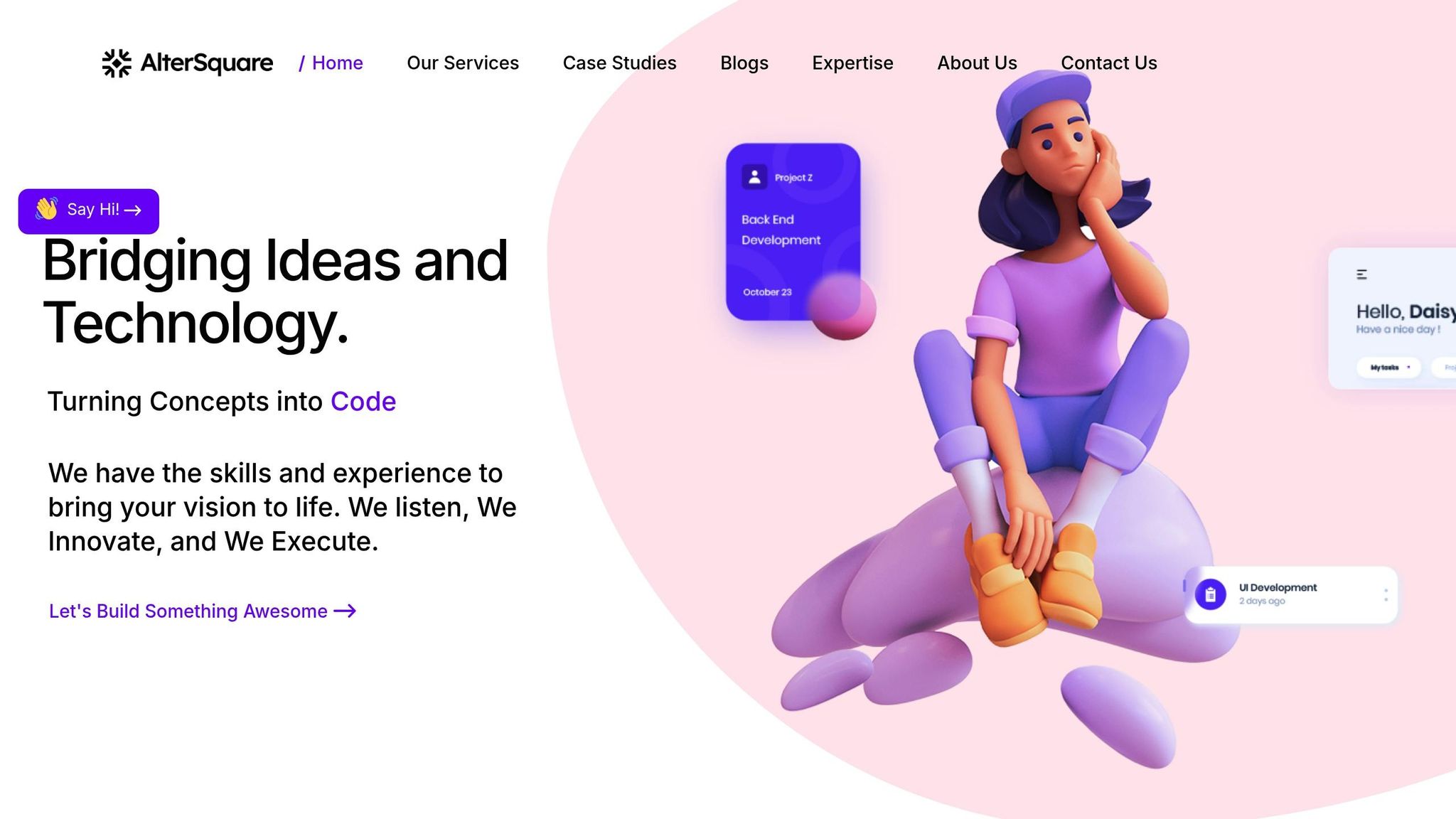Scaling a construction tech startup is tricky. Expand too soon, and you risk failure; wait too long, and you miss opportunities. Here’s what you need to know:
- Start with a niche: Solve specific problems, build expertise, and gain trust with early customers.
- Avoid early expansion risks: Scaling too soon can drain resources and lead to inefficiencies.
- Signs you’re ready to grow:
- Stable funding and workflows
- Market demand and compliance readiness
- Positive customer feedback and proven ROI
- Steps to scale:
- Strengthen your technology using automation and efficient workflows.
- Prepare operations by hiring skilled professionals and maintaining quality.
- Test new markets with small pilots before full expansion.
- Common mistakes to avoid: Misallocating resources, ignoring customer input, and expanding without proven demand.
Focus on data, customer feedback, and scalable solutions to grow your business effectively.
Scaling Your Construction Tech Startup with Javed (Co …
Signs Your Startup is Ready to Expand
Before scaling your business, it’s crucial to confirm you’re truly prepared.
Key Steps to Assess Growth Readiness
- Estimate funding needs: Calculate the capital required for operations and hiring new team members.
- Organize workflows: Use project management tools to efficiently juggle multiple tasks.
- Prepare for new hires: Set up payroll systems and maintain accurate records for incoming employees.
Once you’ve nailed these internal factors, it’s time to evaluate external conditions.
Evaluating Market and Legal Factors
Study the market in the regions you plan to enter. This includes understanding demand, competitive pricing, and local competitors. Also, ensure you meet all regulatory and compliance requirements for those areas.
Align your performance metrics with your expansion goals to keep everything on track.
Using Data to Drive Decisions
Keep an eye on key performance indicators (KPIs) to make informed choices:
- Financial metrics: Monitor revenue, profit margins, and cash flow.
- Customer satisfaction: Use surveys or reviews to gauge how well you’re meeting customer expectations.
- Project timelines: Ensure you’re hitting deadlines and staying on schedule.
Lastly, use customer feedback to fine-tune your expansion strategy and improve your approach as you grow.
Using Customer Input to Guide Growth
Once you’re ready to grow, customer insights can help shape your strategy for expanding into new projects and markets.
Gathering Actionable Customer Feedback
Start by increasing adoption among your current customers. Roll out your solution across multiple projects to build momentum. Use these successes as a springboard to enter related markets. Collect feedback from early adopters, such as project managers and superintendents, focusing on patterns that apply beyond a single deployment. Running pilots across several projects helps you identify recurring challenges and market trends. These insights can directly inform partnerships and your strategic goals.
Building Strong Industry Connections
Solid industry relationships are key for long-term growth. Here’s how to strengthen them:
- Bring on industry experts to ensure your solution addresses challenges across multiple projects.
- Combine product-driven growth with outreach through trusted networks.
- Offer paid pilot programs that clearly demonstrate ROI and encourage long-term commitments.
"The best indication of ROI at the first phase (across projects) is often not a straightforward cost saving, but rather a positive testimonial from project managers and superintendents in the field." – Nate Fuller, Founder of Placer Solutions [2]
Aligning Feedback with Business Goals
To expand at the right time, set clear goals like boosting revenue, entering new regions, or offering additional services. Use customer feedback to confirm that your solution performs well across various project types. Avoid one-off customizations that hurt scalability. This ensures your product development stays aligned with market demands while maintaining the ability to scale effectively.
sbb-itb-51b9a02
Steps to Scale Your Tech Company
Once your product and operations are aligned with customer feedback, focus on scaling through three key areas: technology, operations, and market testing.
1. Scale Your Technology
Use Agile workflows and implement tools for workflow automation and project management to manage growing workloads. This approach helps maintain efficiency and supports ongoing improvements.
Make sure your operations are ready to support this tech foundation.
2. Scale Your Operations
Prepare your resources and maintain quality by focusing on the following:
- Allocate budget for expansion, equipment, and infrastructure.
- Hire and retain skilled professionals.
- Implement consistent quality control measures.
Incorporating tools like Building Information Modeling (BIM) can help streamline processes and handle increased workloads effectively.
Once your operations are solid, move on to testing new markets.
3. Pilot New Markets
Test new regions by conducting phased market research, running small-scale beta tests, and expanding gradually. Base your decisions on metrics like adoption rates, revenue growth, and customer retention.
Mistakes to Avoid When Scaling
Construction tech startups need to be mindful of common mistakes during scaling to ensure steady growth.
Common Scaling Challenges
- Misallocating resources: Poor resource management can strain operations.
- Expanding too soon without profitability: Scaling prematurely can jeopardize financial stability.
- Overlooking feedback from project teams: Ignoring input from those on the ground can lead to inefficiencies.
- Neglecting site-specific needs: Failing to address unique operational requirements can cause disruptions.
- Rushing into expansion without proven demand: Growing without confirmed market interest risks overextending.
How to Address These Issues
- Engage senior leadership: Include top executives in hiring and compensation decisions to align growth with company goals.
- Track key performance indicators (KPIs): Use metrics from construction sites to guide adjustments and improvements.
- Develop scalable workflows: Create processes that can handle a variety of project types without compromising efficiency.
"What got you here won’t get you there." [4]
Scaling should follow growth, not attempt to force it [1]. By focusing on these strategies, construction tech startups can expand effectively while maintaining high standards and customer satisfaction.
Conclusion: Next Steps for Scaling Success
At this stage, you’ve assessed your readiness for growth, tapped into customer insights, and set up the foundation for scalable technology, operations, and market testing. Here’s a quick recap: focus on data-driven market strategies, cloud-based scaling infrastructure, and continuous customer feedback with well-defined KPIs.
"Scaling a tech startup successfully requires a combination of strategic planning and innovative approaches." – Strategic Advisor Board [3]
AlterSquare‘s I.D.E.A.L Delivery Framework

AlterSquare’s I.D.E.A.L Delivery Framework is designed to guide construction tech startups through each growth phase. Early-stage companies can validate their MVPs in just 90 days, while those in the growth phase can refine their architecture for smooth scaling.
Key highlights of the framework include:
- MVP validation in 90 days to explore new markets effectively
- Architecture optimization for scaling core features without interruptions
- Integrated feedback systems to enhance user satisfaction and retention









Leave a Reply